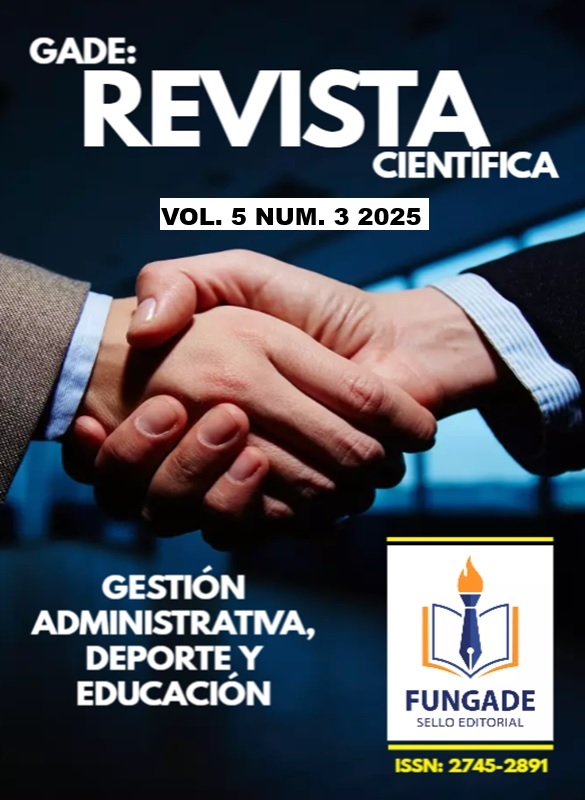Impact of a Proprioceptive Program on Dynamic Balance and Ankle Injury Prevention in Professional Basketball Players
Abstract
Ankle injuries account for up to 45% of all injuries in basketball players, being one of the most common causes of sports absenteeism. In this context, the present study aimed to evaluate the impact of a proprioceptive training program on the prevention of ankle injuries and the improvement of dynamic balance in professional players of the "Motilones del Norte" Basketball Club. A quantitative approach with a quasi-experimental design was developed, using a non-probability convenience sample of 12 athletes divided into an experimental group (n=7) and a control group (n=5). The intervention lasted 12 weeks, with three weekly sessions of specific proprioceptive exercises. The instruments applied were the Y-Balance Test (YBT) to measure dynamic balance and a risk factor survey to identify injury history. Statistical analysis was performed using the student t test for related samples, the Wilcoxon test, and the Mann-Whitney U test, depending on the data distribution. Among the most significant results, a significant improvement in the dominant foot reach was observed in the experimental group (Z=-2.226, p=0.026), a reduction in the functional asymmetry index (Z=-2.375, p=0.018), and a significant difference in the post-test between groups in the posteromedial direction (U=1.000, p=0.017). Additionally, a 42% decrease in the incidence of ankle injuries was reported among participants who completed the program.
Downloads
References
Bleakley, C. M., Taylor, J. B., & Delahunt, E. (2021). Ankle sprain prevention: A review of the most recent evidence. Sports Medicine, 51(5), 1021–1031. https://doi.org/10.1007/s40279-020-01425-5
Campbell, D. T., & Stanley, J. C. (2020). Diseños experimentales y cuasiexperimentales en la investigación social. Editorial Morata.
Creswell, J. W., & Creswell, J. D. (2018). Research design: Qualitative, quantitative, and mixed methods approaches (5th ed.). SAGE Publications.
Doherty, C., Bleakley, C., Delahunt, E., & Holden, S. (2019). Treatment and prevention of acute and recurrent ankle sprain: An overview of systematic reviews with meta-analysis. British Journal of Sports Medicine, 51(2), 113–125. https://doi.org/10.1136/bjsports-2016-096178
Ghasemi, A., & Zahediasl, S. (2019). Normality tests for statistical analysis: A guide for non-statisticians. International Journal of Endocrinology and Metabolism, 10(2), 486-489. https://doi.org/10.5812/ijem.486
Gribble, P. A., Bleakley, C. M., & Hertel, J. (2020). Considerations for developing ankle injury prevention programs in basketball. Journal of Athletic Training, 55(1), 65–72. https://doi.org/10.4085/1062-6050-52.11.16
Hernández, R., Fernández, C., & Baptista, P. (2022). Metodología de la investigación: Las rutas cuantitativa, cualitativa y mixta (7.ª ed.). McGraw-Hill Education.
McKeon, P. O., & Donovan, L. (2019). Proprioception, neuromuscular control, and ankle instability. Journal of Sport Rehabilitation, 28(2), 168–177. https://doi.org/10.1123/jsr.2018-0115
Molina, G., Rodríguez, L., & Guerrero, D. (2021). Validación de un instrumento para evaluar factores de riesgo en deportistas de élite. Revista de Ciencias del Deporte, 37(2), 115–124. https://doi.org/10.5294/rcd.2021.37.2.7
Mertens, D. M. (2019). Research and evaluation in education and psychology: Integrating diversity with quantitative, qualitative, and mixed methods (5th ed.). SAGE Publications.
Sampieri, R. H., Collado, C. F., & Lucio, M. P. B. (2022). Metodología de la investigación (7.ª ed.). McGraw-Hill Education.
Shaffer, S. W., Teyhen, D. S., Lorenson, C. L., Warren, R. L., Koreerat, C. M., Straseske, C. A., & Childs, J. D. (2020). Y-Balance Test: A reliability study involving multiple raters. Military Medicine, 185(3-4), 411–416.
Copyright (c) 2025 Eduard Enrique López Pedraza,Fernando Cote Mogollón,Oscar Antonio Quintero Vagas,Andrés Aubin Portilla Flórez,Julio Manuel Maza,Jorge Ricardo Sanna Guerrero

This work is licensed under a Creative Commons Attribution-NonCommercial-NoDerivatives 4.0 International License.






